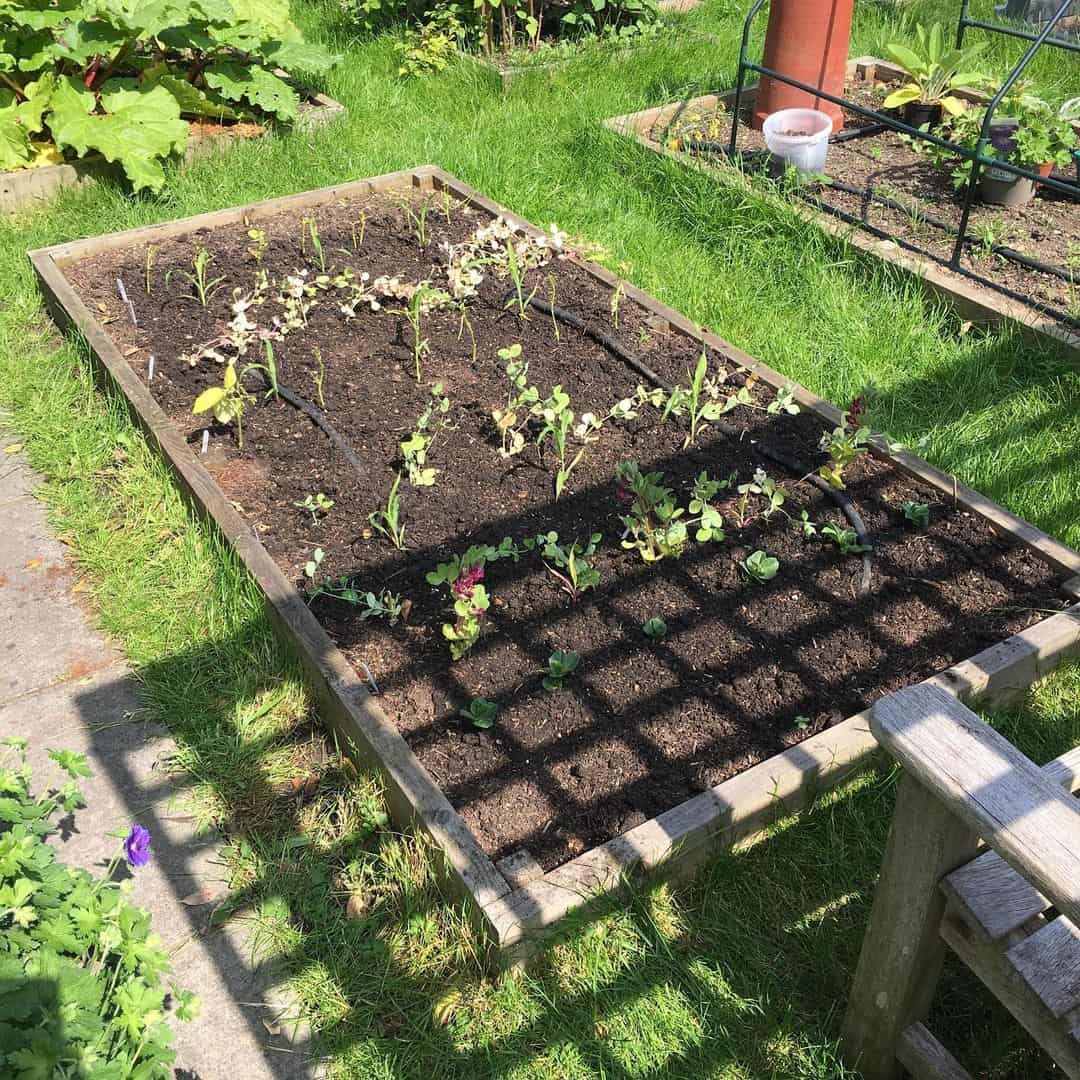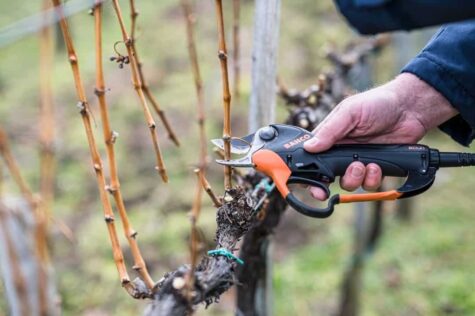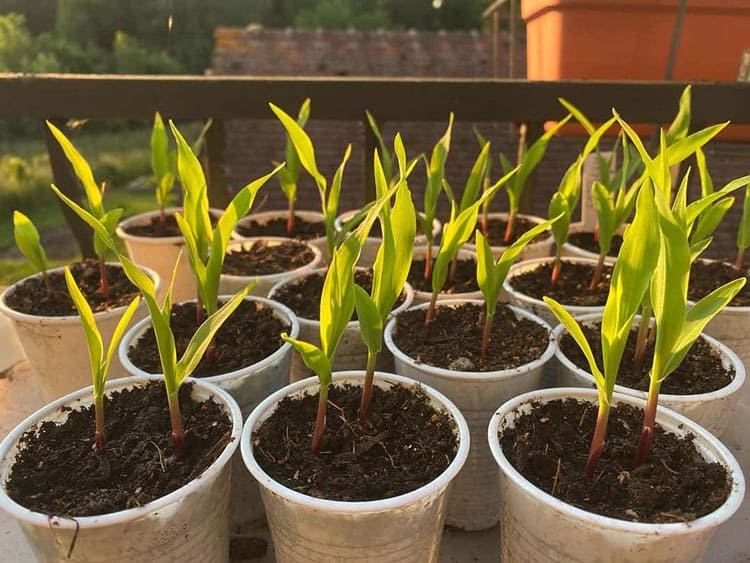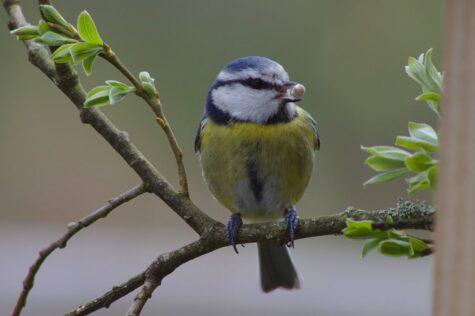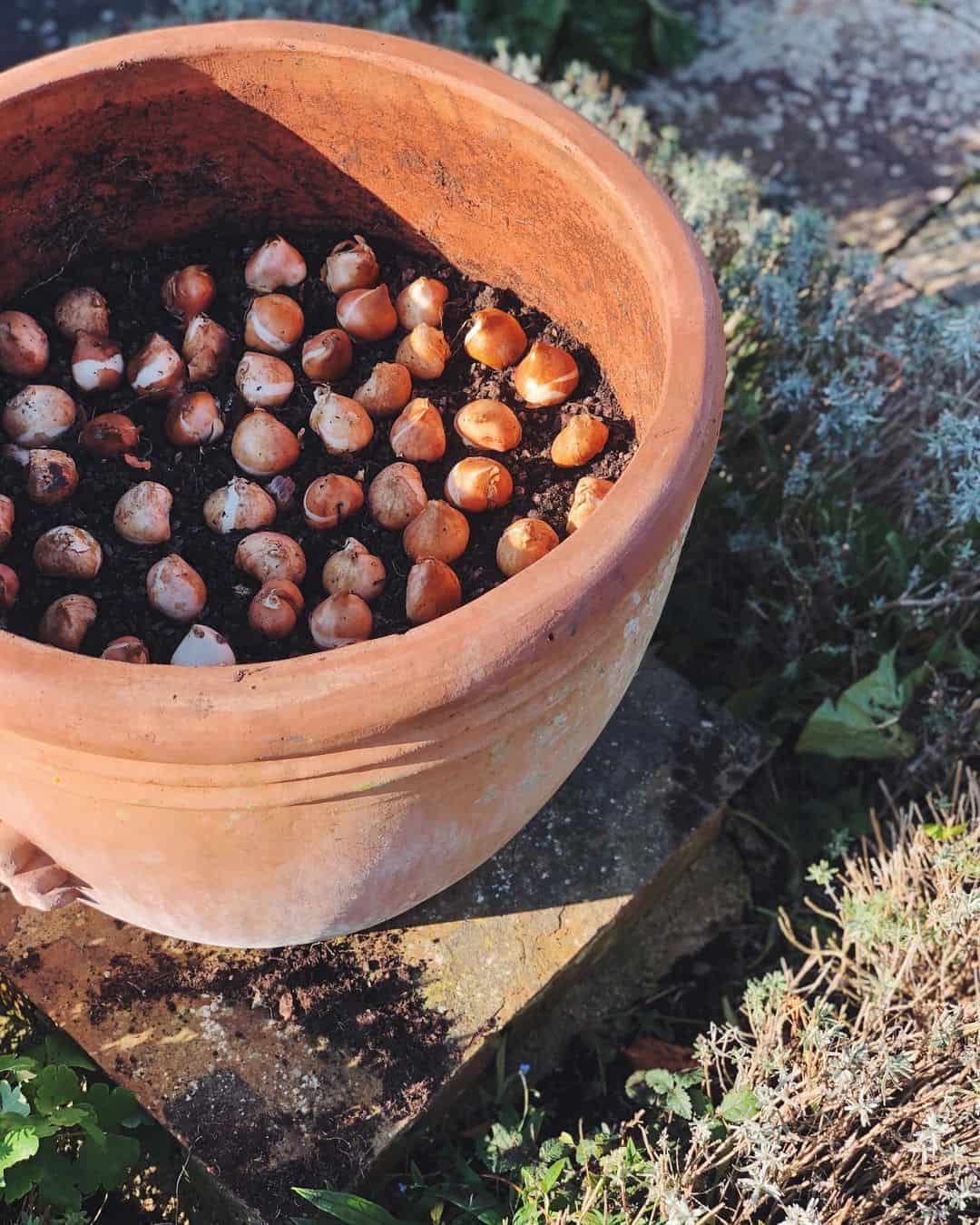Spring is the perfect time to fertilise your plants. That’s because your plants need lots of energy to make new leaves and buds after a dormant winter.
But when exactly should you fertilise plants in spring and how often should you do it? In this post, we’ll look at when to feed the different plants in your garden. We’ll also talk about the different types of fertilisers available and how to apply them.
A bit of research and planning now will pay off during the blooming period. So, let’s get to work.
When to fertilise the garden in spring

Image credit: @jennyroseinnes
Trees, flowering annuals, spring bulbs, and seedlings all have different fertilisation needs. Some require heavy nitrogen feeding once in early spring, while others can grow well with a bit of all-purpose fertiliser. Let’s take them one at a time.
Trees and shrubs
Trees and shrubs in your garden need little to no fertiliser. But if they have undersized, pale leaves or dead branch tips, you can apply a granular fertiliser in early spring.
Annuals
Spring annuals, like petunias, snapdragons, and sweet alyssum, are heavy feeders. They will benefit from regular fertilisation.
You can use an all-purpose fertiliser every 2 to 6 weeks. Start before spring planting for best results.
Perennials
Most perennials, like dahlias and geraniums, love phosphate-rich soil. They only need a little supplemental feeding. You can add a granular fertiliser before their spring blooming season.
On the other hand, roses need fertilising throughout their growing season. You can feed them every 2 to 4 weeks from spring until summer.
Vegetables

Image credit: @mygarden_andbeyond
Fertilise fast-growing leafy greens like kale and lettuce once in early spring. Use a mild liquid fertiliser and take care to avoid contact with the leaves.
For long-season crops like corn and squash, it’s better to feed them twice. You can fertilise first during spring planting and next in midsummer to encourage rapid growth.
You Might Also Like: 15 Best Vegetables to Plant in Spring
Fruits
Early to mid-April is an ideal time to fertilise your fruit trees and shrubs in spring. That’s the time when your plants will need plenty of energy to make baby fruits.
Bulbs

Image credit: @grondig_geniethen
You’ll need to fertilise the ground before planting spring-blooming bulbs like crocus and hyacinths. You can apply a bulb fertiliser in autumn and again in early spring when new growth appears.
Seedlings
Spring seedlings are delicate. Use only a mild liquid fertiliser once the seedlings develop at least two sets of true leaves. These leaves grow at the top of the plant and resemble the adult leaves, unlike the simpler seed leaves or cotyledons.
You can feed seedlings twice a week starting from mid-spring when the seedlings are stronger.
Lawns
For a lush lawn all year round, apply a nitrogen-rich fertiliser. March and April are perfect for feeding your lawn in spring, once the weather warms up a little. You can also leave mowed grass clippings for an extra source of nitrogen.
Types of fertiliser
The market is full of fertilisers, including granules and liquid, organic and inorganic varieties. All these are rich sources of important nutrients like nitrogen, phosphorus, and potassium but they supply these nutrients in different ways.
Before you start fertilising your plants in spring, check out the different options available:
Granular fertiliser
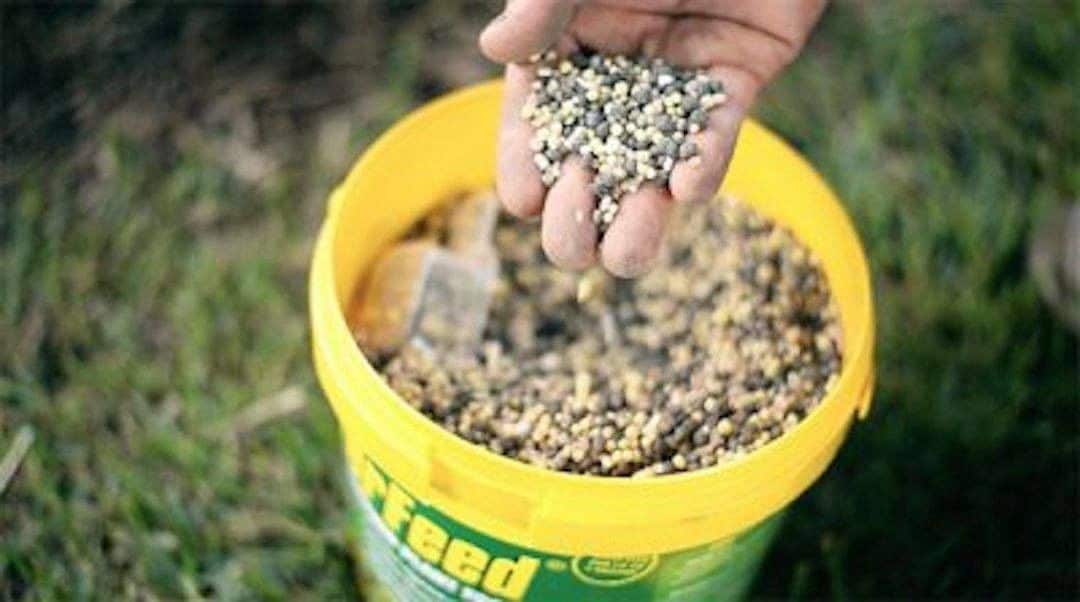
Image credit: @seasol_international
Granular fertilisers release their nutrients slowly. These are best for trees, shrubs, long-season flowers, and vegetables. You can opt for granular pellets or coarse powders. Good drainage conditions will help maximise the intake of nutrients.
Granular fertiliser can be either synthetic or natural. Natural granular fertiliser is made from manure and compost. You can choose from different varieties of synthetic granular fertiliser, some of which are formulated for specific types of soil.
Liquid fertiliser

Make your own weed tea fertiliser. Image credit: @pipmagazineau
Liquid or water-soluble fertilisers are fast-acting. You can use them to give your plants a quick boost of essential nutrients. But since they are diluted, you’ll have to reapply them more frequently.
Tip: You can make your own liquid organic fertiliser at home. Put compost in a bucket, add water, cover with a lid, and let it sit for two days to make compost tea. Then dilute one part compost tea with ten parts water in another bucket and apply to plants.
Organic fertiliser
Organic fertilisers are made of plant and animal matter. They can strengthen your plants, improve soil quality, and also benefit the environment, but they only release their nutrients when the soil is moist and warm.
Inorganic fertiliser
Inorganic fertilisers are made synthetically from chemicals. They can provide a very specific balance of nutrients that’s just right for your plants.
However, over-application can burn the sensitive root system of the plants. Inorganic fertilisers aren’t eco-friendly, so opt for an organic variety or make your own.
Homemade fertiliser

Image credit: @_plants_succ
Homemade fertilisers are cheap, organic and great for the environment. You can make your own fertiliser using kitchen scraps like eggshells, coffee grounds, vegetable and banana peels. Here are some ideas:
- Eggshell fertiliser – Crush eggshells in a jar, add water and cover the jar with a lid. Use after a week. Rich in calcium, this fertiliser is best for houseplants.
- Coffee grounds fertiliser – In a bucket, mix two cups of brewed coffee grounds with about 22 litres of water. This fertiliser works best for acidic-loving plants like daffodils, azaleas, hydrangeas, blueberries, beans, and onions.
- Banana peel fertiliser – Put banana peels in a jar and top up with water before replacing the lid. Use after three days. This fertiliser is suitable for fruit plants and flowers only.
How to apply fertiliser

Image credit: @vole__king
There are many different ways to apply fertilisers, depending on which type you choose. You can apply some to the soil surface, others either need a deeper application or watering to let the plants absorb the nutrients.
Next, we’ll look at some of the best ways to fertilise your plants in spring.
Broadcasting
Broadcast application covers large areas, like lawns and flowerbeds. You can scatter granular fertiliser on the ground before planting. Then till the soil or water it to thoroughly mix the fertiliser.
Top dressing
This method is ideal for trees and shrubs. You can simply apply some granular fertiliser around the base of the plant to stimulate growth. Make sure to avoid leaf contact as it can cause scorching.
Base dressing
Base dressing helps feed the plants while you water them. You only have to mix some water-soluble fertiliser with water, following the instructions on the label. This method is ideal for container plants and vegetables.
Watering on
This is one of the easiest fertilisation methods. Simply apply a water-soluble powder or granular fertiliser around the plant roots. Then pour water over it. Your plants will get an instant boost of nutrients.
Foliar application
For foliar feeding, you need a liquid fertiliser. Apply the fertiliser to the plant leaves instead of the soil. This method is especially useful when your plants need to quickly absorb deficient nutrients.
Spring fertilising FAQs

Image credit: @theurbannanna
Unsure if your plants need fertiliser or wondering how to fertilise a potted plant? Find the answers to some commonly asked questions about fertilising plants below:
How do I know if my plants need fertiliser?
The first sign is slow or no growth. If your plants aren’t making new leaves in spring as they should, it’s time to fertilise them.
You can also look for yellowing leaves, spotting and discolouration, and leaf drop. All these mean that your plants are lacking essential minerals like nitrogen, phosphorus and potassium.
What fertiliser will make my flowers bloom?
A phosphorus-rich fertiliser will make your flowers bloom all season. Phosphorous encourages buds, seeds and fruit formation.
You will also need to give a potassium boost to your plants. This will help strengthen their roots and absorb maximum nutrients from the soil.
How do I fertilise a potted plant?
You can fertilise a potted plant in two easy ways: pour liquid fertiliser or add slow-release granules.
To apply liquid fertiliser, mix the recommended amount in water and simply pour it into your pots.
For slow-release granules, just sprinkle the fertiliser over the soil then mix it in using a garden fork. Finally, water the soil to activate the granules.
Is over-fertilising bad for my spring plants?
Yes. It can harm the plant roots, burn the leaves and even kill the plant. But don’t worry—your plant can recover from too much feeding. You can also wash away the extra nutrients to quicken the process.

Save this pin for later

